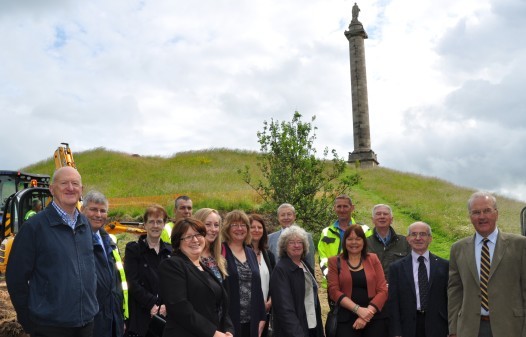Work has started on a £400,000 project designed to showcase Elgin’s historical highlights.
The Castle to Cathedral to Cashmere heritage route will take shape over the next two years, and yesterday organisers gathered at the summit of Ladyhill to mark its launch.
The first part of the plan involves the creation of a 750ft all-abilities path, which will lead to the statue of the 5th Duke of Gordon which overlooks the town.
The new £25,000 route will begin at the north side of the hill and will be an alternative to the existing pedestrian path from the south side, which is steep and uneven.
Chairman of the Castle to Cathedral to Cashmere Partnership, Jim Royan, outlined his plans for the project yesterday before the work began.
He said: “Elgin has a unique place in the history of Scotland dating back to the 10th century.
“But as well as matters of historic significance, the heritage route will focus on the tales of everyday Elgin folk.
“It is time to celebrate our past and use that legacy to place Elgin and Moray as a genuinely compelling visitor destination.”
The new Ladyhill path, which is being built by contractor Alistair Young and Sons, is due to be completed in September.
Ladyhill bears the remains of the ruined Elgin Castle and work on linking it with the town’s most famous landmark – Elgin Cathedral – and the Johnstons of Elgin cashmere centre will follow.
Chairman of the Moray Economic Partnership, John Cowe, added: “This is a wonderful project which celebrates Elgin’s rich history and many beautiful buildings.
“This will bring tourists and visitors to the area, but I also expect it will be warmly welcomed by locals.
“It will give us all a pride in our heritage.”
The project, which is being backed by the Heritage Lottery Fund, involves more than 17 organisations and volunteers including Moray Council, the Elgin Fund and Highlands and Islands Enterprise.
Records suggest there was a castle or royal fortress on Ladyhill in 1296, when the population of Elgin was about 600.
It is thought to have been a ruin since the 15th century and all that remains today is a 62ft by 36ft rectangular structure.
